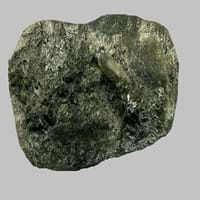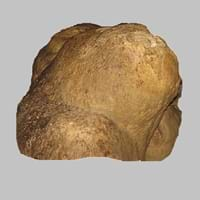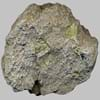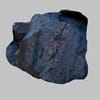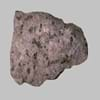Definition
Kenyte is a variety of porphyritic phonolite or trachyte rock with rhomb shaped phenocrysts of anorthoclase with variable olivine and augite in a glassy matrix
Travertine is a mineral consisting of layered calcium carbonate formed by deposition from spring waters
Discoverer
J. W. Gregory
Marcus Vitruvius Pollio
Etymology
From the mountain ranges- Mount Kenya and is named by J. W. Gregory in 1900
From Italian travertino a kind of building stone, from Tiburs, adjective from Tibur (Tivoli), in Italy
Class
Igneous Rocks
Sedimentary Rocks
Sub-Class
Durable Rock, Medium Hardness Rock
Durable Rock, Medium Hardness Rock
Group
Not Applicable
Not Applicable
Other Categories
Fine Grained Rock, Opaque Rock
Fine Grained Rock, Opaque Rock
Texture
Glassy, Granular
Banded
Color
Brown, Buff, Cream, Green, Grey, Pink, White
Beige, Black, Blue, Brown, Grey, Red, White, Yellow
Durability
Durable
Durable
Scratch Resistant
Yes
Yes
Appearance
Banded and Foilated
Fibrous
Interior Uses
Decorative Aggregates, Entryways, Homes, Interior Decoration, Kitchens
Decorative Aggregates, Entryways, Flooring, Homes, Interior Decoration
Exterior Uses
As Building Stone, Garden Decoration, Paving Stone
As Building Stone, As Facing Stone, Paving Stone, Garden Decoration, Office Buildings
Other Architectural Uses
Curbing
Curbing
Construction Industry
As Dimension Stone, Cement Manufacture, Construction Aggregate, for Road Aggregate, Landscaping, Making natural cement, Manufacture of Magnesium and Dolomite Refractories, Production of Glass and Ceramics
As Dimension Stone, Building houses or walls, Cement Manufacture, Construction Aggregate, for Road Aggregate, Raw material for the manufacture of mortar
Medical Industry
Not Yet Used
Not Yet Used
Antiquity Uses
Artifacts, Monuments, Sculpture
Artifacts, Jewellery, Monuments, Sculpture, Small Figurines
Commercial Uses
Cemetery Markers, Creating Artwork
Cemetery Markers, Creating Artwork, Gemstone, Jewelry, Paper Industry, Pottery
Types
Not Available
Not Available
Features
Application of acids on the surface causes cloudy frosting, Available in Lots of Colors and Patterns, Dissolves in hydrochloric acid, Is one of the oldest rock
Stalactites and stalagmites are formed from this rock, Surfaces are often shiny, Very fine grained rock
Archaeological Significance
Famous Monuments
Data Not Available
Colosseum in Rome, Italy, Sacré Coeur in Paris, France, Trevi Fountain in Rome, Italy
Famous Sculptures
Data Not Available
Data Not Available
Formation
Kenyte is a fine-grained, hard rock which is a type of metasomatite, essentially altered basalt. It forms with or without crystallization, either below the surface as intrusive rocks or on the surface as extrusive rocks.
Travertine is a type of sedimentary rock formed when a river carries or transports pieces of broken rock which then undergo sedimentation. They are then subjected to high temperature and pressure hence forming travertine rock.
Mineral Content
Albite, Amphibole, Biotite, Cancrinite, Feldspar, Hornblende, Plagioclase, Pyroxene, Sodalite
Calcite, Clay, Feldspar, Micas, Quartz
Compound Content
Aluminium Oxide, CaO, Iron(III) Oxide, FeO, Potassium Oxide, MgO, MnO, Sodium Oxide, Phosphorus Pentoxide, Silicon Dioxide, Titanium Dioxide
Ca, NaCl, CaO, Oxygen
Types of Metamorphism
Burial Metamorphism, Cataclastic Metamorphism, Impact Metamorphism
Not Applicable
Types of Weathering
Biological Weathering
Biological Weathering, Chemical Weathering, Mechanical Weathering
Types of Erosion
Chemical Erosion, Coastal Erosion
Chemical Erosion, Coastal Erosion, Glacier Erosion
Grain Size
Fine Grained
Fine Grained
Fracture
Conchoidal to Uneven
Splintery
Streak
White, Greenish White or Grey
White
Porosity
Highly Porous
Highly Porous
Luster
Greasy to Dull
Dull to Pearly
Cleavage
Poor
Non-Existent
Toughness
Not Available
1
Specific Gravity
2.6
1.68
Transparency
Translucent to Opaque
Opaque
Density
2.6 g/cm3
2.71 g/cm3
Specific Heat Capacity
Not Available
Resistance
Heat Resistant, Impact Resistant, Wear Resistant
Impact Resistant, Pressure Resistant, Wear Resistant
Deposits in Eastern Continents
Asia
Indonesia, Iran, Russia, Saudi Arabia, Sri Lanka, Taiwan, Thailand, Turkey, Turkmenistan, Vietnam
China, Russia
Africa
Angola, Egypt, Madagascar, Namibia, Nigeria, South Africa
Not Yet Found
Europe
Andorra, Finland, France, Germany, Great Britain, Italy, Norway, Portugal, Spain, Sweden
Austria, Italy, Portugal, United Kingdom
Others
Greenland
Not Yet Found
Deposits in Western Continents
North America
Canada, USA
Canada, USA
South America
Brazil, Chile, Colombia, Uruguay, Venezuela
Argentina, Bolivia, Ecuador
Deposits in Oceania Continent
Australia
New Zealand, Queensland, South Australia, Tasmania, Western Australia
Not Yet Found
Kenyte vs Travertine Characteristics
Though some rocks look identical, they have certain characteristics which distinguish them from others. Characteristics of rocks include texture, appearance, color, fracture, streak, hardness etc. Kenyte vs Travertine characteristics assist us to distinguish and recognize rocks. Also you can check about Properties of Kenyte and Properties of Travertine. Learn more about Kenyte vs Travertine in the next section. The interior uses of Kenyte include Decorative aggregates, Entryways, Homes, Interior decoration and Kitchens whereas the interior uses of Travertine include Decorative aggregates, Entryways, Flooring, Homes and Interior decoration. Due to some exceptional properties of Kenyte and Travertine, they have various applications in construction industry. The uses of Kenyte in construction industry include As dimension stone, Cement manufacture, Construction aggregate, For road aggregate, Landscaping, Making natural cement, Manufacture of magnesium and dolomite refractories, Production of glass and ceramics and that of Travertine include As dimension stone, Building houses or walls, Cement manufacture, Construction aggregate, For road aggregate, Raw material for the manufacture of mortar.
More about Kenyte and Travertine
Here you can know more about Kenyte and Travertine. The life cycle of a rock consists of formation of rock, composition of rock and transformation of rock. The composition of Kenyte and Travertine consists of mineral content and compound content. The mineral content of Kenyte includes Albite, Amphibole, Biotite, Cancrinite, Feldspar, Hornblende, Plagioclase, Pyroxene, Sodalite and mineral content of Travertine includes Calcite, Clay, Feldspar, Micas, Quartz. You can also check out the list of all Igneous Rocks. When we have to compare Kenyte vs Travertine, the texture, color and appearance plays an important role in determining the type of rock. Kenyte is available in brown, buff, cream, green, grey, pink, white colors whereas, Travertine is available in beige, black, blue, brown, grey, red, white, yellow colors. Appearance of Kenyte is Banded and Foilated and that of Travertine is Fibrous. Properties of rock is another aspect for Kenyte vs Travertine. The hardness of Kenyte is 5.5-6 and that of Travertine is 3-4. The types of Kenyte are Not Available whereas types of Travertine are Not Available. Streak of rock is the color of powder produced when it is dragged across an unweathered surface. The streak of Kenyte and Travertine is white, greenish white or grey. The specific heat capacity of Kenyte is Not Available and that of Travertine is 1.09 kJ/Kg K. Depending on the properties like hardness, toughness, specific heat capacity, porosity etc., rocks are resistant to heat, wear, impact, etc.Kenyte is heat resistant, impact resistant, wear resistant whereas Travertine is impact resistant, pressure resistant, wear resistant.
